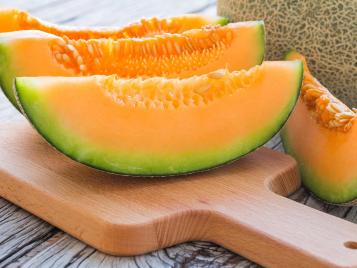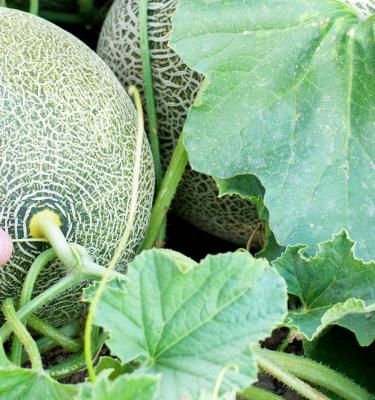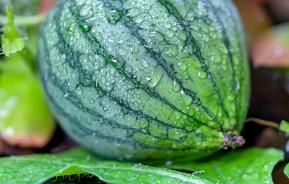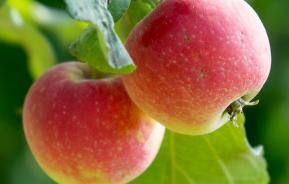You may have never considered growing melons before – thinking they’re too ‘tropical’ for the UK climate. Although they do need warm growing conditions, they are fairly easy to grow.
Melons are one of those crops most people would love to have a go at growing – even if it’s just to be able to tell everyone else they’ve grown one!
How to grow melons
Cultivating melons
Melons are tender annuals producing climbing or scrambling growth, so they will need a fair amount of space and proper training to produce a worthwhile crop.
Melons need plenty of warmth and good sunlight to grow and fruit well.
Outdoor melons must have a warm, sunny, sheltered position, such as against a south-facing wall. Covering the soil with black plastic will help raise soil temperatures and improve fruiting. But for best results, grow melons in a greenhouse, under cloches or in a growing frame or cold frame.
The soil must be humus-rich and well drained. Before planting out, improve the soil with lots of organic matter, such as well-rotted manure, compost or soil improver to hold plenty of moisture, which they need for a good crop. Then add a good dressing of a general granular plant food.
Or, better still, you can grow melon plants individually in a 30cm (12in) pot filled with a good potting compost. Slightly restricting their roots in a container will help to improve flowering and fruiting.
Melon varieties
There are three main types of melons:
- Cantaloupe: ribbed, rough fruit, orange-coloured flesh, which are most likely to do well in cool climates. Good varieties: Charentais, Edonis, Ogen, Sweetheart.
- Honeydew: firm yellow flesh, which keep well. Good variety: Magenta.
- Musk: yellow or green-netted skin, green to orange-coloured flesh, which are only worthwhile growing in a greenhouse or similar. Good varieties: Blenheim Orange, Early Dawn.

How to grow melons from seeds
Sow melon seeds in early spring for growing under glass in a greenhouse or in mid-spring for outdoor crops. Plant melon seeds individually in 9cm (31/2in) pots of seed sowing compost and germinate at 20-25°C (68-77°F) in a propagator in good light. Once 3 or 4 true leaves (after the rounded seed leaves) have formed, you can remove the plants from the propagator and grow on at 18-20°C (68-70°F).
Gradually harden off the plants, acclimatising them to outdoor conditions, for 10-14 days, if planting outdoors.
Most good garden centres will also sell young melon plants.
How to care for melons
In early summer, plant out to their cropping position, so the top of the rootball is just below soil level, with plants spaced 60cm (2ft) apart. Don’t plant too deeply because covering the stem can lead to rotting.
Keep the plants well watered at all times, especially when flowering and fruiting, and feed weekly with a high potash liquid plant food once the first fruit has set.
Pinch out the growing tips at the fifth leaf to encourage sideshoots, which will bear the flowers. Also pinch out the sideshoots at 1 or 2 leaves past the pollinated flowers/young fruit.
As the fruit swells, it may need supporting in a net if plants are grown upwards, as it can get quite heavy. Fruit ripening on the soil may need to be lifted off the ground using a piece of wood or tile to prevent rotting and encourage even ripening.
Only allow outdoor melons produce no more than 4 fruit, greenhouse melons can usually ripen up to 6 fruit.
Harvesting melons
When melons are ready for harvesting they emit a typical melon scent and start to soften around the stalk.
| Flowering season(s) | Summer |
|---|---|
| Foliage season(s) | Spring, Summer |
| Sunlight | Full sun |
| Soil type | Chalky, Clay, Loamy, Sandy |
| Soil pH | Neutral |
| Soil moisture | Moist but well-drained |
| Ultimate height | Up to 1.8m (6ft) |
| Ultimate spread | Up to 1.2m (4ft) |
| Time to ultimate height | 5 months |








